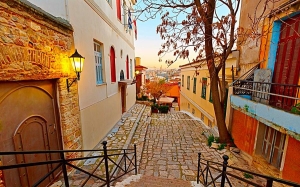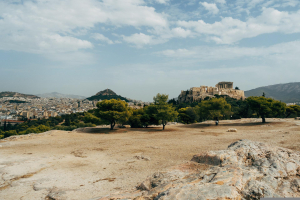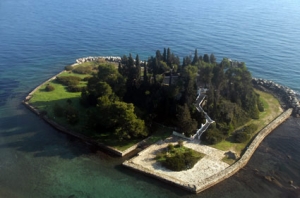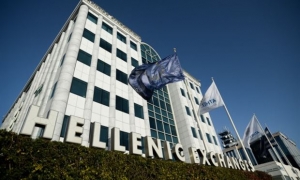Of all the islands of Greece, the one that lies the closest to Albania and Italy is Kerkyra and it is connected by boats to both countries. From a financial perspective, the largest percentage of the inhabitants of Kerkyra work in agriculture or in tourism. They mainly cultivate olives, vines, fruit trees, potatoes and citrus fruits. Kerkyra has an important animal production as well; bee breeding and bird breeding have also been developed. With regards to industrial production there are olive oil factories, weaving factories, paper mill factories, dairy products factories, industry of pasta and ship yards. However tourism is the Prefecture most important industry and the islands of Kerkyra have become cosmopolitan travel destinations, famous all over the world.
A green rock in the middle of the sea is Kerkyra’s trademark. The legendary Podikonisi, at the entrance of the Chalkiopoulo lagoon is one of the sights you can admire but you can’t touch. As it is a natural museum, visitors are forbidden to walk and stay on its grounds so that the virgin habitat is kept intact. If you insist on visiting the island you should know that you are going to stay there just for a few minutes and under the guards’ strict monitoring. Unless you are lucky and you are in Kerkyra on the 6th of August, day of celebration for the monastery "The Transformation of the Saviour", when you can visit for adoration. It is the only day of the year that it is allowed to enter the interior of the island.
To read more, please visit kerkyrainfo.gr.
BUSINESS CENTRE
XpatAthens
October 3 - Autumn Colours
Remember to stay connected with us through our weekly newsletter, Facebook, and Twitter!
Diverse Teams Drive Better Outcomes
On average, only 33% of women living and working in the European Union are likely to hold a management position. When it comes to the world’s largest corporations, only 24% of women (4.8%) are CEOs of Fortune 500 companies, with female professionals accounting for less than a quarter (24%) of senior roles globally, according to the 2018 Fortune list. In practice however, attitudes are changing.
This content has been sponsored by IWG - an XpatAthens Brand Partner.
Originally published at International Workplace Group
Greek Wines To Try (And Buy) In Athens
Gris de Nuit, Ktima Tselepos
This outstanding rosé wine is the new creation of Yiannis Tselepos, owner of a 12-acre estate in Arcadia, in the heart of the Peloponnese. This is where the indigenous Moschofilero grape flourishes, in the cold valley of Mantinia, which produces lively white wines. However, Moschofilero is a red grape variety whose slightly tainted rosé wines can also be called “gray”, following a night’s maceration of skins with juice. Intensely aromatic, bone-dry yet supple and creamy, this is an exemplary dry rosé in an Alsace-styled bottle for extra character.
For more great wines, and tips on what to look for when buying Greek wine, visit: thisisathens.org
Photo by: Amalia Kovaiou
Whether you've just arrived in town – or have been here for years – Athens always has new secrets to share!
Thank you This is Athens for your contribution as an XpatAthens Partner.
Wardrobe For Sale
Excellent condition. Free.
Taker must have strong helpers and either a van or a large car with roof rack.
The Hills Of Athens And The History Behind Them
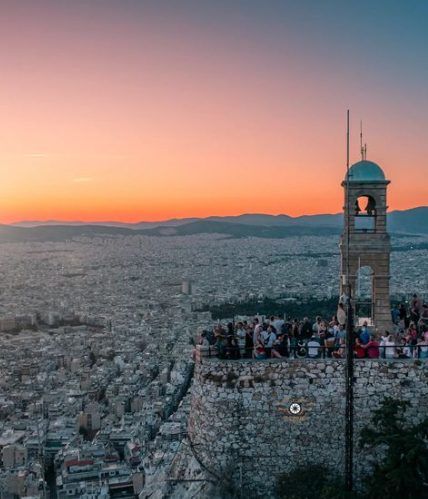
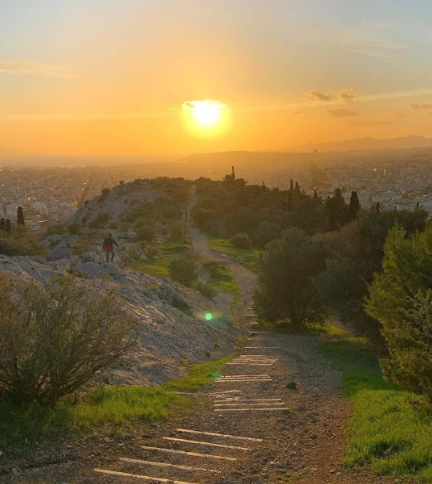
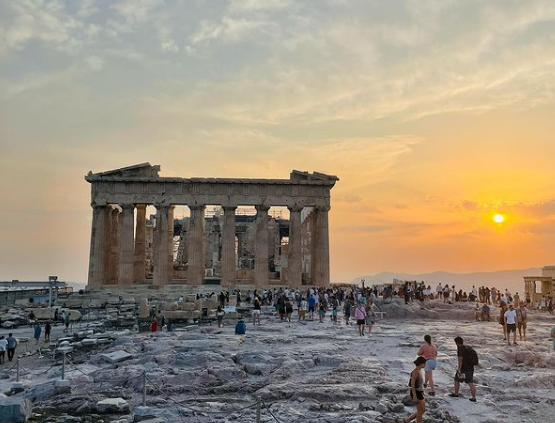
Undoubtedly, the most popular attraction, not only in the Greek capital but also in the entire country, the Acropolis - the cradle of civilization - is found on the hill of the same name, in the heart of the historical center of Athens. About seven million tourists climb the Acropolis hill every year for a "journey" back to Ancient Greece and to admire the Parthenon up close.
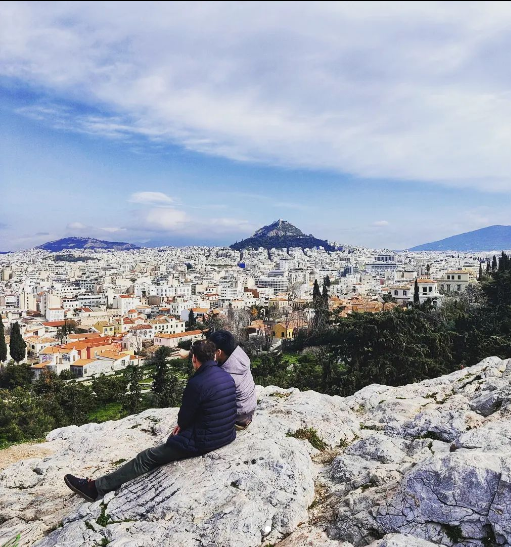
@the_historian_tourist
Originally published in Greek on: newsbeast.gr
Translated by: Codico Lab
Unraveling Wisdom: The Origins Of 7 Greek Proverbs
From ancient times to the present day, Greek proverbs have served as guides for navigating life's challenges and celebrating its joys. Let's dive into the origins of seven Greek proverbs, each offering a glimpse into the cultural tapestry of Greece and the timeless wisdom embedded within its language.
1. Χαιρέτα μου τον πλάτανο (Chereta mou ton platano)
Kerkyra Island - Podikonisi
Kerkyra, also known as Corfu, is located on the Heptanese and is the biggest Prefecture of the Ionian Islands region in terms of population. The extension of its area is 641 square kilometers and it has a population of 107,592 inhabitants. It is constituted by Kerkyra, the second largest island of the Ionian sea after Cephalonia, and by the small islands Othoni, Mathraki, Erikoosa and the group of the Paxi – Antipaxi islands.
Ekmek (Byzantine Dessert With Fresh Cream)
This dessert consists of three layers. The first layer is a spongy cake with a sweet syrup, the second layer is a custard pastry cream that has been lightened with whipped cream and finished with a generous layer of whipped cream that has been whipped and flavored with vanilla. Finally topped with toasted slivered almonds.
SPONGE CAKE
4 eggs
1 cup sugar
1 cup flour
Pinch of salt
4 tbs melted butter
CUSTARD CREAM
2 cups whole milk
½ cup sugar
¼ cup flour
2 eggs
3 Tbs butter
½ tsp vanilla
1 cup fresh whipping cream
FRESH WHIPPED CREAM
2 cups fresh whipping cream
½ tsp vanilla
½ cup slivered and toasted almonds
In a mixer whisk on the highest speed four eggs with one cup of sugar until frothy and pale in color. Remove from mixer and fold in the flour with a shifter. Take turns in mixing melted butter and sifts of flour so that you uniformly combine the ingredients. Do not over mix. You need all the air and bubbles.
Put in a rectangular cookie sheet on top greased baking paper. Bake in a 350 preheated oven for 20 minutes. Remove and allow to cool. When cooled down, wet with a light simple syrup.
To make the syrup put in a sauce pan 1 cup of sugar with ½ cup water. Allow to simmer for 4-5 minutes.
Now proceed with making the pastry cream.
In a large mixing bowl we whisk the eggs with sugar and flour. In a sauce pan we heat the milk slightly and pour the above paste (eggs, sugar, flour) into the sauce pan with the milk. We return the cream to the heat and whisking constantly on medium heat the cream will thicken. Then we add the butter and vanilla. We mix to incorporate and remove from the heat. Set aside and allow to cool down.
In the mean time whip all three cups of the cream with 1 TBS sugar and vanilla until stiff. Take one cup of the cream and slowly with careful motions incorporate into the pastry cream. Cover and put in the fridge for ½ hour.
Now you are ready to assemble the dessert. It sounds like a lot of work but after you make it once and you know the steps it is really easy.
Choose a nice large platter with agreeable shape of your sponge cake. Place the sponge cake in the dish. Spread the cooled-down pastry cream. Finish with the whipped cream on top and toasted almonds. Place the dessert in the fridge and allow to cool down for a couple of hours before serving.
By Eleni Melirrytou
Significant Gains For Athens Stock Exchange Tuesday
The Athens Stock Exchange has opened with significant gains on Tuesday, with the general price index standing at 920.81 points at 15:07 on Tuesday, up by 7.80%. The banking sector alone is up by 11.52%.
Additionally, transactions are currently valued at 155.18 million euros, while the yield of the ten-year bond has dropped to 8.86%, the three-year bond to 13.30% and the five-year bond to 14.22%.
To read more, please visit tovima.gr/en


